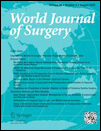Outcomes Following Percutaneous Cholecystostomy Tube Placement for Acalculous Versus Calculous Cholecystitis
The original online version of this article was revised: The fourth sentence in the Results section of the abstract was corrected.
A correction to this article is available online at https://doi.org/10.1007/s00268-022-06632-8.
Copyright comment: corrected publication 2022
Abstract
Background
Acute acalculous cholecystitis (AAC) is often diagnosed in critically ill patients. Percutaneous cholecystostomy tube (PCT) placement facilitates less invasive gallbladder decompression in patients who are poor surgical candidates. Specific guidelines for optimal management of AAC patients following PCT placement remain to be defined. We hypothesize that AAC patients are at lower risk of recurrent cholecystitis than acute calculous cholecystitis (ACC) patients and do not require cholecystectomy after PCT placement.
Methods
A retrospective review of patients who underwent PCT placement for AAC or ACC between 6/1/2007 and 5/31/2019 was performed. Primary outcome was recurrent cholecystitis and interval cholecystectomy for patients surviving 30 days after PCT placement. Secondary outcome was 30 day mortality. A cox regression model calculated the adjusted hazard ratio (AHR) for the outcomes.
Results
Eighty-four AAC and 85 ACC patients underwent PCT placement. Compared to ACC patients, more AAC patients were male (72.6 vs. 48.2%; p < 0.01), younger (median age 62 vs. 73 years; p < 0.01), and required intensive care (69.0 vs. 52.9%; p = 0.04), with lower median Charlson Comorbidity Index (4.0 vs. 6.0; p < 0.01). 30 day mortality was higher among AAC patients than ACC patients (45.2 vs. 21.2%; p < 0.01). 2/24 (8.3%) AAC patients and 5/31 (16.1%) ACC patients developed recurrent cholecystitis at a median 208.0 days (IQR:64.0–417.0) after PCT placement and 115.0 days (IQR:7.0–403.0) following PCT removal. Cox regression analysis demonstrated that AAC patients had lower likelihood of interval cholecystectomy compared to ACC patients (AHR 2.35; 95% CI:1.11,4.96).
Conclusion
Recurrent cholecystitis is rare in patients surviving 30 days following PCT placement. When compared with ACC patients, fewer AAC patients require cholecystectomy.




